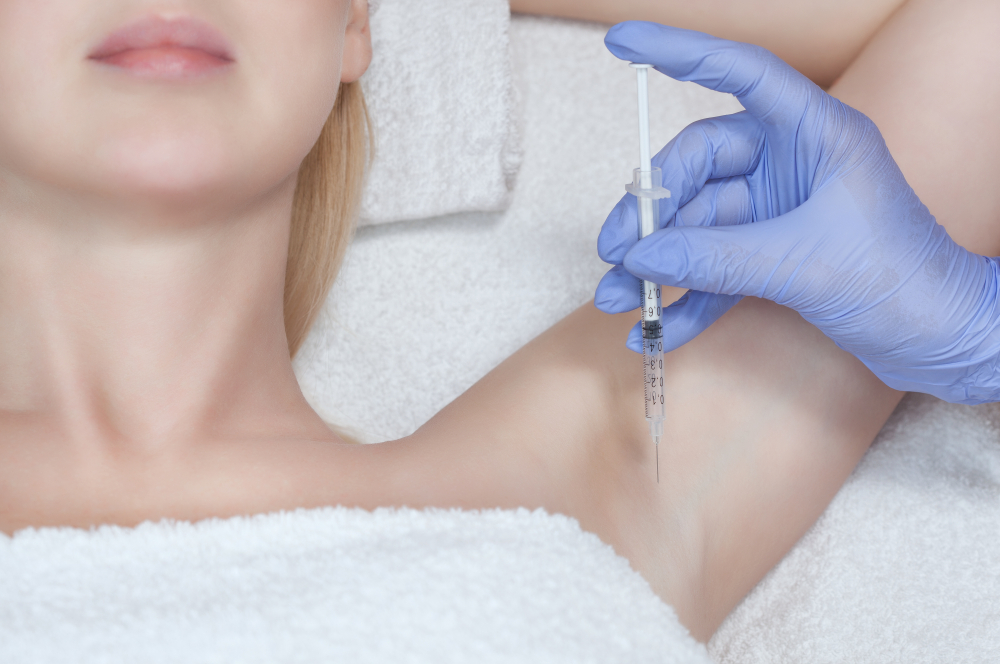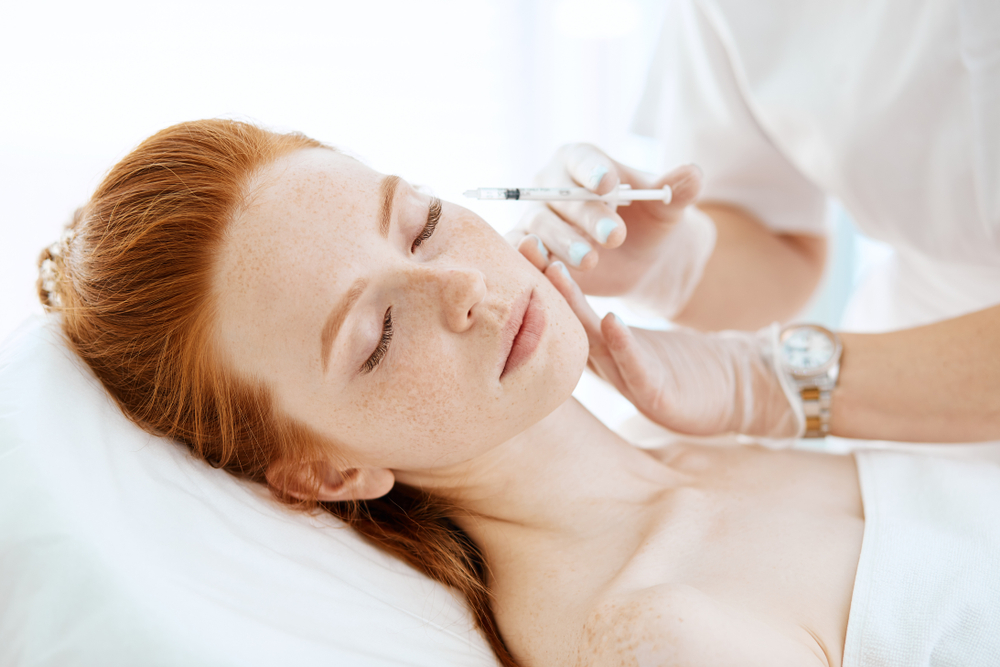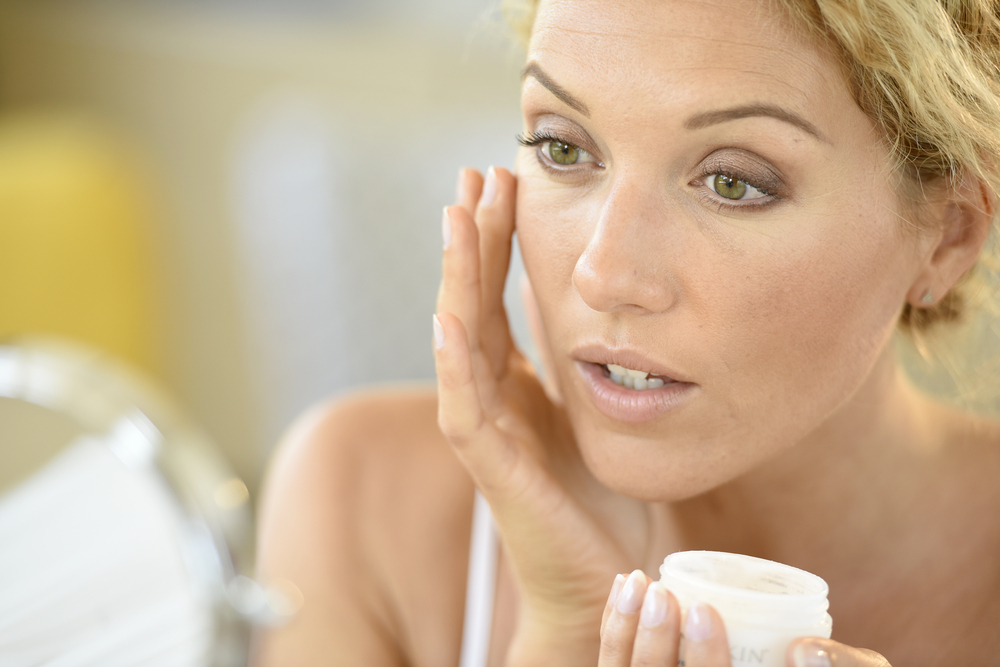- Botox treats excessive sweating by blocking the nerves that activate the sweat glands.
- Results typically last for approximately four months.
- Many insurance companies will help cover the costs of treatment.
Hyperhidrosis, also known as excessive sweating, is a common disorder that affects approximately 2.8% of the U.S. population, according to figures published in the Journal of the American Academy of Dermatology.
Hyperhidrosis is most commonly treated with prescription antiperspirants or anticholinergics, special oral drugs designed to reduce sweating. However, these therapies aren’t always effective. Patients who don’t respond well to conventional treatment options may find Botox is an effective way of managing hyperhidrosis.
How Does Botox Treat Hyperhidrosis?
The primary active ingredient in Botox is botulinum toxin type A, a type of neurotoxin primarily used to treat facial wrinkles. Botox is most commonly used for cosmetic purposes, but can be applied for a variety of medical applications. In 2004, the U.S. Food and Drug Administration (FDA) approved Botox for use in the treatment of primary hyperhidrosis.
Primary hyperhidrosis refers to localized excessive sweating. It affects just one part of the body, such as the palms, underarms, scalp or soles of the feet. In contrast, secondary hyperhidrosis occurs when the entire body produces excessive sweat.
Botox inhibits the body’s ability to produce sweat. When your body temperature rises, your eccrine glands start producing sweat to help cool you down. Primary hyperhidrosis occurs when the nerves that send signals to your eccrine glands are overactive. Botox essentially paralyzes these nerves, thereby blocking the secretion of the chemical that activates your eccrine glands.
What Can Be Expected from the Procedure
Prior to treatment, your doctor may instruct you to let your underarm hair grow out for three or four days. You may also be instructed to avoid taking blood thinners as well, in order to reduce the risk of bruising.
The treatment itself is a non-surgical procedure that’s usually performed in your doctor’s office. Using a very fine needle, your provider will inject the Botox into the area of your body that is experiencing excessive sweating. The injections are typically applied in a grid pattern and spaced roughly 1 cm apart, although this can vary slightly depending on the treatment area and the severity of your symptoms.
You won’t likely notice any change immediately after your treatment as it usually takes about two weeks for Botox to take effect.
Are the Injections Painful?
While the injections aren’t considered to be very painful by most patients, you’re still likely to feel some discomfort during the procedure. As such your provider may use ice or topical anesthetics to help alleviate any potential pain you could experience. Most patients find injections in the hands and feet to be considerably more painful than injections in the underarms and forehead.
Treatment Areas
Botox is currently only approved to treat underarm sweating, which requires 50 units per side. However, it’s commonly used off-label to reduce excessive sweating in other parts of the body as well. For example, research published in Neurology found that Botox decreased palm sweat for six months in most patients, while other studies have shown Botox can be very effective for reducing forehead sweat.
The table below lists the most common hyperhidrosis treatment areas, along with the number of Botox units typically required to address the problem.
| Treatment area | Units required |
|---|---|
| Underarms | 50 per side |
| Palms | 50 per hand |
| Feet | 50 per foot |
| Forehead | 40-50 |
| Groin | 50-100+ |
Results and Reviews
Most patients are able to achieve excellent results with Botox. It’s a particularly good option for those who don’t respond well to more conventional treatment options. According to a report published in the New England Journal of Medicine, Botox can decrease sweating in the target area by as much as 75%. Results typically last for approximately four months.
Reducing sweat production can directly impact many aspects of a person’s life. Researchers from the University of Würzburg found that patients who used Botox to treat hyperhidrosis saw improvements in their emotional status, ability to participate in social activities, work productivity, and more. With these benefits in mind, it’s little wonder 98% of patients who’ve received Botox for hyperhidrosis say they’d recommend the treatment to others.
What Are the Side Effects of Using Botox to Treat Hyperhidrosis?
Botox is generally considered to be a very safe treatment, but as with most procedures, comes with potential side effects. The most common being:
- Bruising and swelling
- Nausea
- Headaches
- Fever
- Reduced finger movement and grip strength (if you receive hand injections).
Contact your doctor if you experience any side effects that don’t resolve themselves within a few days.
At this time there are no studies on the effects of using Botox during pregnancy. If you are pregnant, planning on becoming pregnant, or nursing, you should avoid Botox.
Hyperhidrosis Treatment: Botox vs. Dysport vs. Xeomin
Botox isn’t the only injectable product used to treat hyperhidrosis. Depending on your provider’s experience and professional preferences, he or she may recommend using other botulinum toxin type A products such as Dysport or Xeomin instead. While Botox is currently the only such product with FDA approval, many patients have achieved similarly excellent results with both Dysport and Xeomin.
Botox vs. Dysport
In an investigation published in the Journal of Drugs in Dermatology, researchers set out to compare Botox and Dysport for treating hyperhidrosis. They found that while Botox and Dysport were equally effective at reducing sweat, the time it took for the products to take effect was quite different. Botox had an onset period of roughly one week, while Dysport had an onset of two weeks.
Botox vs. Xeomin
Xeomin is a relatively new botulinum toxin type A product that is sometimes used off-label to treat hyperhidrosis. Interestingly, the effects appear to be almost identical to those of Botox. Neither physicians nor patients can detect any differences in pain, onset, or duration of results, according to research published in the Journal of Neural Transmission.
How Much Does It Cost?
It typically costs around $1,000-$1,500 to treat both underarms. The price can vary depending on the severity of your condition and your geographical location.
Botox for hyperhidrosis is FDA approved, so many insurance companies will help cover the cost of treatment. Bear in mind that Botox is usually reserved for patients who have already tried other therapies and found them to be ineffective. Plus, you may first need to experiment with other treatments, such as certain oral drugs and topical products, before your insurance company will cover you.
Takeaway
Botox is an effective way of treating hyperhidrosis. While the underarms are currently the only approved treatment area, Botox is frequently used off-label to reduce sweating in other parts of the body as well. Other botulinum toxin type A products can also be used to treat hyperhidrosis, although right now Botox is the only brand that has FDA approval for this purpose.
Find a Botox Provider near You
Ideally, you should look for a physician who not only has experience with Botox but is also familiar with hyperhidrosis treatments.









